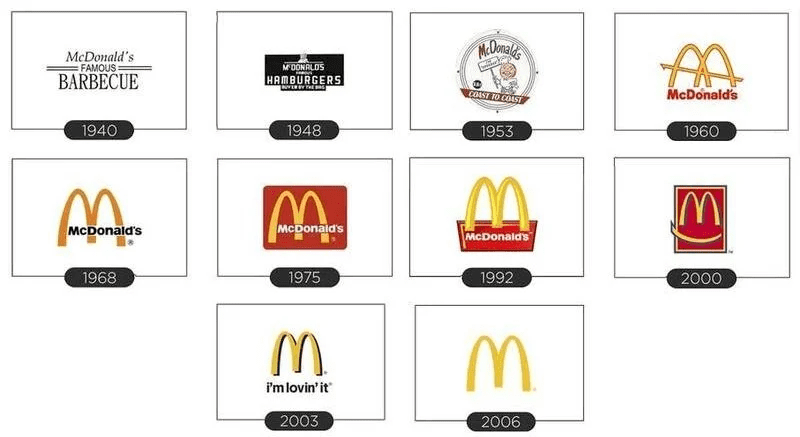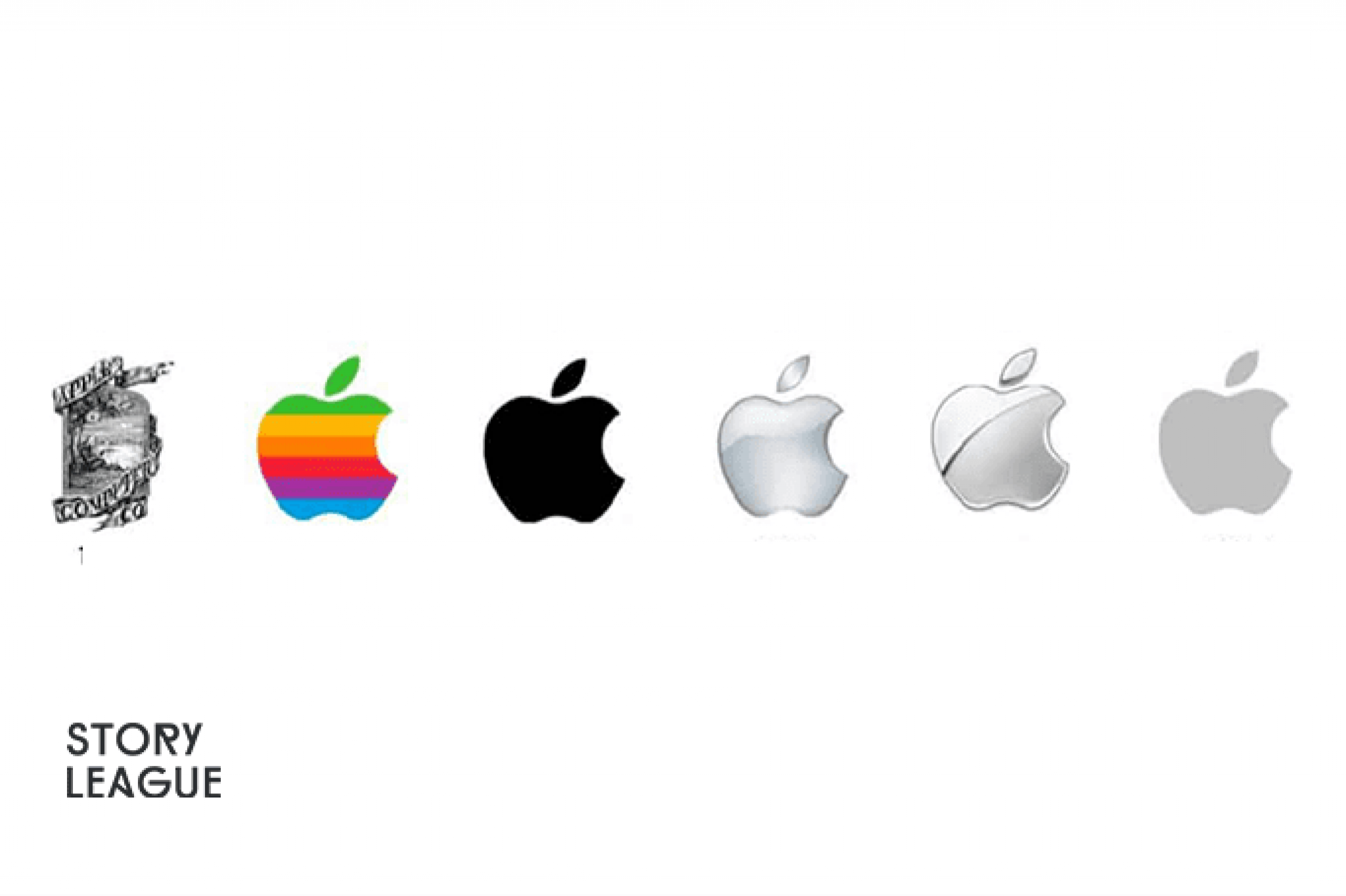Business branding isn’t a one-time thing, it constantly evolves as your business grows. It’s important to be mindful of this as you reach new milestones and developments.
Unlike a full rebrand, which involves a significant change in how your brand looks, acts and presents itself, brand evolution involves small steps to reinvigorate your business. A brand evolution aims to maintain the brand’s relevance and appeal to its target audience while still staying true to its core values and identity.
Apple is a brand that has gone through rebranding and evolution through time, and its changing logos is a testament to this. From Apple’s colourful, rainbow logo in 1977, its rebrand has transformed it into a minimalistic, sophisticated aesthetic that reflects Steve Jobs’s values and philosophy. This is an example of rebranding.
On the other hand, the subtle but nuanced changes to Apple’s logos from 2007 to 2017 are a perfect brand evolution example. From the 3D look of the logo in 2007, the brand simplified its aesthetics to a monochromatic look with a jet-black logo in 2017. Other brand evolution examples that have gone through similar changes include Coca-Cola, BMW and Shell.

Left to right: Apple Logos 1977-1998; 2007-2017; 2017-Present
What is brand evolution?
A brand evolution is an intentional process that you can use to enhance your core values and business offerings, and it can be beneficial to refresh your brand as you continue to grow your business.
Although they function differently, business and personal branding can evolve similarly. A brand evolution involves making small but strategic changes to the brand to keep it fresh and relevant.
Brand evolution enables you to maintain your key values and familiarity with customers while making small changes through:
- A slightly different colour palette
- Tone of voice
- Logo redesign
- Awareness campaigns

Mcdonald’s Logos through the years
Source: Logo My Way
McDonald’s has undergone changes since its conception while still maintaining its brand aesthetics and identity. While its logo has certainly transformed over decades as a business, McDonald’s uses similar colour palettes and fonts.
When it comes to your own brand, it’s important to launch awareness campaigns of the changes you’re implementing so that you can properly introduce how your brand is evolving to your audience.
How does the brand evolution process affect your content?
Because brand evolution involves incremental changes, it may not be noticeable at first glance how this can impact your content.
Making subtle changes in your tone of voice, brand personality or even writing style can result in a rippling effect of changes throughout your content. It can result in minor shifts to your aesthetics or even the content styles you use for your business.
Having a solid content strategy can help you track your content, allowing you to easily identify the changes and review how each piece of content performs. This can also help you monitor the changes that you start to implement and compare how they perform against your previous branding campaigns.
5 signs you need to consider evolving your brand
We’ve shortlisted indicators that your business would benefit from a brand evolution process.
1. Changes in customer preferences
It’s important to understand the evolving trends in consumer behaviour and how they can affect your brand and business. If your customers’ preferences and pain points evolve, your brand needs to respond accordingly to meet their needs.
It’s important to consider what kind of cosmetic and in-depth changes you need to make to your brand aesthetics, depending on what is relevant to your business and your audiences.
Suppose your customers now want personalised experiences; highlighting the customer service you provide can be an integral part of your brand evolution. This can include developing a loyalty or rewards program that benefits existing customers or it can consist of changing your front-end processes in dealing with customers.
2. Changes in the competitive landscape
According to McKinsey, local players are now better managed and much sharper in their strategy, which is resulting in fierce competition with global giants in emerging markets. This can trigger a brand evolution for businesses to stay ahead of the competition and showcase their unique selling propositions to their respective target audiences.
If this fierce competition is something you’re experiencing in your industry, it may be time to consider how you can start evolving your brand to adapt to the changes. Making small changes to your brand can be a solution to increasing brand visibility and setting yourself apart from your competitors.
3. Stagnant growth
Your small business may experience periods of stagnancy or plateauing. Making small changes to your brand can refresh your lead generation and help you generate insights on how to keep growing your business.
It’s important to have a strong brand strategy in place so that you have a clear idea of how you can change or improve your branding to drive business growth. Your brand is integral in influencing the buyer’s willingness to pay, which is why you must develop strong messaging that inspires your target audience to act in favour of your business.
4. Expanding product lines
It’s important to establish your authority in the relevant industry areas of your new products and services. For example, if Story League expands to creating documentaries, we need to promote our expertise in this field through our content and our relevant digital channels.
Depending on your business and industry, you also need to consider if you should create new product names for a new product line. This can strengthen brand recall and recognition for your audience, allowing them to link new products and services back to your brand easily.
5. Changes in technology
As we incorporate artificial intelligence into more of our daily lives, it’s much easier for new technologies or digital marketing channels to disrupt an industry. Being aware of how technology can impact your business can allow you to identify ways that your brand might need to evolve to stay relevant and competitive.
Brand evolution is something you need to carefully consider before implementing, as it can significantly change your business. When it’s done properly, a brand evolution can refresh your business’ impression on the public and tap a new segment of your audience.
Are you ready to evolve your brand? Contact us and we’ll help you develop your branding.

